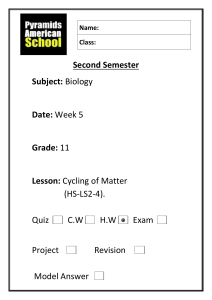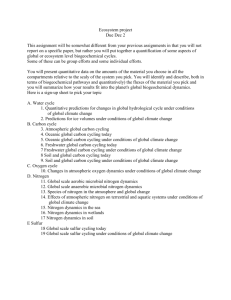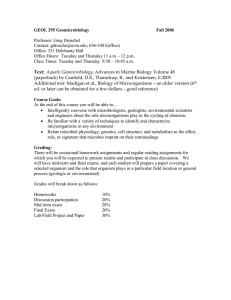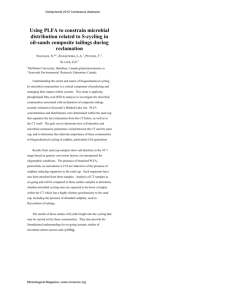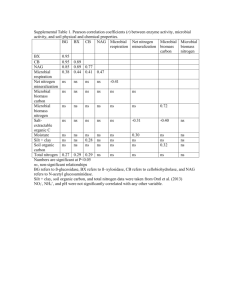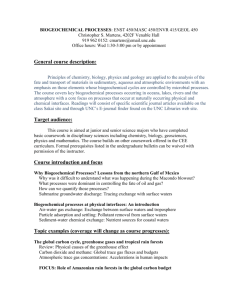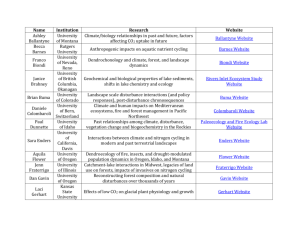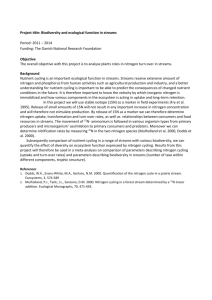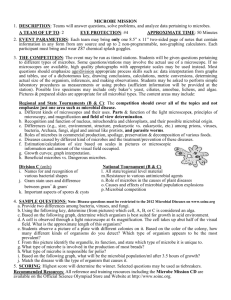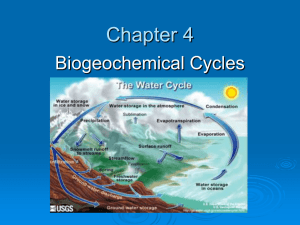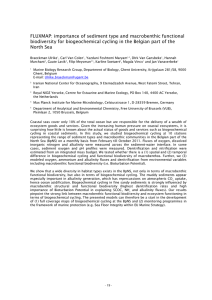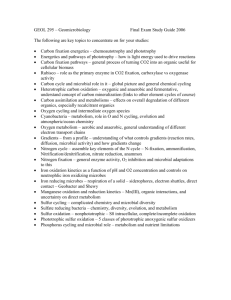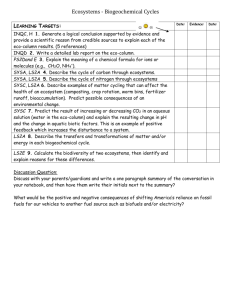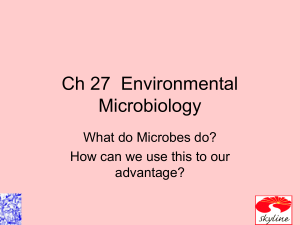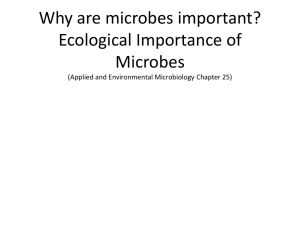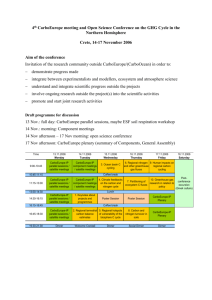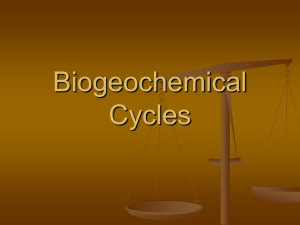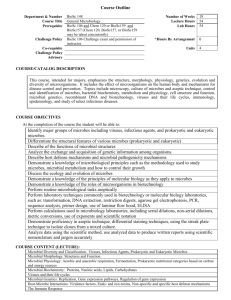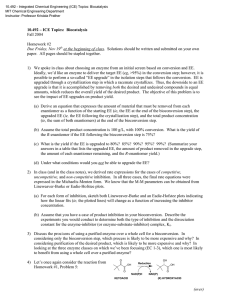Slide 1
advertisement
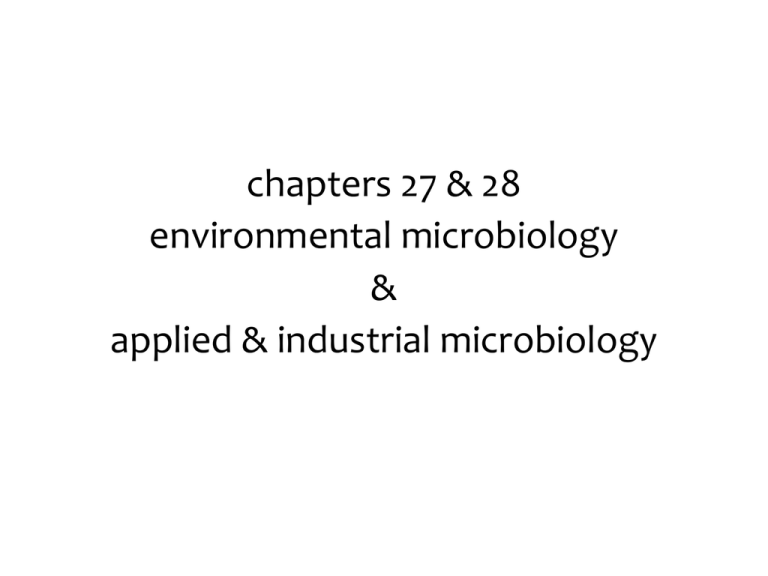
chapters 27 & 28 environmental microbiology & applied & industrial microbiology microbial diversity and habitats • habitat diversity – unique C and E sources – metabolic strategies •fermentation respiration • heterotrophy phototrophy •symbioses – ruminants – mycorrhizae – extreme environments •pH •temperature •salinity •pressure biogeochemical cycling: the carbon cycle biogeochemical cycling: the nitrogen cycle nitrogen fixation biogeochemical cycling: the sulfur cycle life without sunshine SO42– H2S microbial decomposition composting & bioconversion Chapter 27 learning objectives 1. 2. 3. 4. 5. 6. Discuss the metabolic strategies and environments that make microbes more versatile than multicellular organisms. Discuss the roles of bacteria in nitrogen, carbon and sulfur cycling. What are the basic steps in these processes? Who fixes nitrogen, and why are there so few types of organisms that do? Discuss the role of the chemoautotroph in extreme environments. Define and discuss bioremediation and bioaugmentation. Discuss composting and bioconversion. Contrast the different types of fuels made during bioconversion. Chapter 28 microbial water pollution - galactosidase ONPG ONP (yellow) -glucuronidase MUG fluorescent compound food preservation microorganisms in food production bioreactors industrial products Chapter 28 learning objectives 1. How are microorganisms used to indicate water pollution? 2. Generally, how are foods treated to avoid spoilage? 3. How are microbes involved in cheese, bread, alcohol and thickener production? 4. How are microbes used in industry? 5. Discuss primary and secondary metabolites and how the terms bioreactors, trophophase and idiophase relate to the production of these metabolites.
